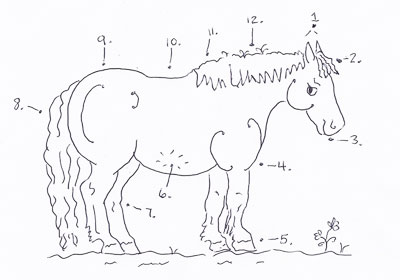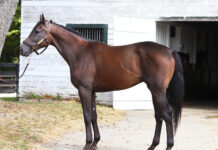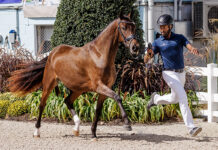I’ve worked with a variety of ponies in my life, each one of them memorable for different reasons. They range from sweet Amanda, who carefully carried nervous kids over the jumps, to wily Michael. If he became annoyed with the kid on his back he’d stop abruptly, fold up his legs and lie down.
- Ultrasonic Ears: Ponies are blessed with an acute sense of hearing. Studies show they can detect the rattle of a grain bucket 150 yards away. Ironically, the same study revealed that some ponies were unable to ascertain the sound of a young child on its back screaming the word, “Whoa!”
- Thick forelock: This trademark tuft of wiry hair hides a telltale set of horns.
- Powerful Teeth: A pony’s teeth are perfectly designed to snap, crunch and grind carrots, peppermints, apples and fingers.
- Long, Sloping Shoulder: This widely admired conformation trait allows the pony to excel in athletic activities like jumping, dressage, cross-country trekking and rearing.
- Durable Hooves: Extremely hardy, a pony’s hooves miraculously come equipped with a magnetic-like attraction to the human foot.
- Rotund Body Shape: The typical pony has a teddy bear tummy that continues to expand despite reduced rations of feed and increased amounts of exercise. (It’s a glandular thing).
- Springboard Hocks: These nimble joints function much like a rocket launcher as the pony propels its rider over obstacles usually reserved for full-sized horses. This amazing feat is even more dramatic when the pony is jumping through a line headed toward the out-gate.
- Voluminous Tail: The pony personally makes use of its long tail by maneuvering it like a feather duster to cover its tracks. That way it can continue clandestine excursions like unlatching its gate and sneaking off to the feed room for a midnight snack.
- Plump Hindquarters: This is one of those rare occasions when the words “fat butt” and “adorable” actually work well together.
- Strong Back: An inherently sturdy constitution deludes some older riders into thinking they haven’t outgrown their pony. Such people require an intervention. It can start with, “Your toes are bumping your pony’s fetlocks. Honestly, it’s time to suck it up and move on to a horse.”
- Prominent Withers: A built-in safety feature for bareback trail riders. The withers prevent an unplanned dismount when the pony slams on the brakes, drops its head and grabs a mouthful of grass.
- Thick, Abundant Mane: Layers of wiry hair create a convenient handhold for young riders. This is vitally important during those unexpected “pony moments” like spooking at mirages, leaping three-feet above a set of crossrails and bolting back to the barn at the conclusion of the riding lesson.
Back to Life with Horses







Oh, how true that is!
hahaha This is the perfect description!
Sounds like every pony I’ve ever known. Especially like the hidden horns. Like devil horns? Ha!
funny
Pretty cute and oh so true in many cases.
Always heard the smaller they are the more trouble(annoying and meaner) they are this goes for dogs too.
Very cute article.
hahaha This is a funny article! She forgot to mention one thing though: the origin of the phrase “stiff-necked”.
Someone once told me that if ponies were people they’d all be in prison. Now that I have a pony on my property I finally know that’s true!
THANKS FOR ALL YOUR COMMENTS!
WHAT WOULD WE DO IF WE DIDN’T HAVE A PONY OR TWO IN OUR LIVES? EVERY HORSE LOVER SEEMS TO HAVE AT LEAST ONE GOOD STORY ASSOCIATED WITH A PONY. NEEDLESS TO SAY, I HAVE PLENTY!
Good Info!
so is it better not to get a pony as a first horse?